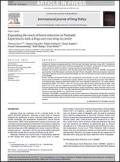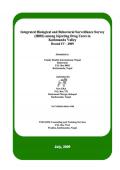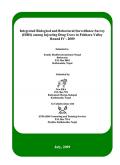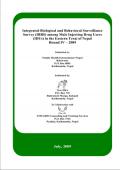What's New
Displaying results 4161 - 4170 of 4914

Resource | Videos,
The HIV/AIDS Data Hub provides free online access to available data pertaining to the epidemiology, vulnerability, risk behaviors, socio-economic impacts, and responses to HIV. Its mission is to support national authorities and their partners in the provision of effective evidence-based responses to those affected by the AIDS epidemic in the Asia-Pacific region.

Resource | Presentations,
Symposium: Caring for children & families affected by HIV in concentrated and low-level epidemics: Government and community responses that are making a difference!
9th ICAAP, 11 August 2009, Bali, Indonesia

Resource | Publications,
Despite an ongoing epidemic of HIV among Thai people who inject drugs (IDU), Thailand has failed to implement essential harm reduction programmes. In response, a drug user-led harm reduction centre opened in 2004 in an effort to expand reduction programming in Thailand.
We examined experiences with the Mitsampan Harm Reduction Centre (MSHRC) among IDU participating in the Mitsampan Community Research Project (Bangkok). Multivariate logistic regression was used to identify factors associated with MSHRC use. We also examined services used at and barriers to the MSHRC.

Resource | Publications,
This study is the fourth round of IBBS conducted among 300 male Injecting Drug Users (IDUs) in the Kathmandu Valley. The study was undertaken to measure the prevalence of HIV and syphilis, and associated risk behaviors among IDUs. Demographic, sexual behavior and injecting behavior data were collected through structured questionnaire while the prevalence of HIV and syphilis were selectively measured by testing blood sample.

Resource | Publications,
This study is the fourth round of IBBS conducted among 300 male IDUs in the Pokhara Valley. The study was undertaken to measure the prevalence of HIV and syphilis, and associated risk behaviors among IDUs. Demographic, injecting behavior and sexual behavior data were collected through structured questionnaire while the prevalence of HIV and syphilis were measured by testing blood samples using Determine HIV 1/2 test to detect antibodies against HIV, Uni-Gold test as a second test and SD Bioline HIV 1/2 test as a tie-breaker test.

Resource | Publications,
This report details the findings of the third round of the IBBS conducted among 300 male IDUs in the Western to Far-Western Terai of Nepal. The study was conducted with the primary objective of measuring HIV and syphilis prevalence among the study population and to assess their HIV/STI related risk behaviors including their sexual and drug use habits. It also aimed to assess their exposure to the HIV/AIDS/STI awareness and prevention programs targeted at IDUs in the Western to Far- Western Terai of Nepal.

Resource | Publications,
This document summarizes the findings of the third round of the IBBS conducted among 400 MSM in the Kathmandu Valley in 2009. This survey was conducted primarily to determine the prevalence of HIV and STIs among MSM in the Kathmandu Valley and to assess their HIV/STI-related risk behaviors, including their sexual behaviors.

Resource | Publications,
This study presents the findings of the fourth round of the Integrated Biological and Behavioral Surveillance (IBBS) conducted among Injecting Drug Users (IDUs) of the Eastern Terai region of Nepal. The study is based on a survey of 345 males aged 16 years and above who have been injecting illicit drugs for at least three months before the date of the survey. The IDUs were recruited from different areas of the Jhapa, Sunsari, and Morang districts of the Eastern Terai. The objective of the study was to determine the prevalence of HIV/STIs and to assess HIV/STI-related risk behavior among the IDUs in the study areas. The study also collected information on IDUs’ socio-demographic characteristics, awareness of HIV/STIs, sexual behavior, condom use and exposure to intervention programs in the study areas. The fieldwork started on 19 January and was completed on 23 February 2009

Resource | Publications,
The HIV epidemic in Indonesia is among the fastest growing in Asia, and limited funding is available for HIV/AIDS control. The epidemic is concentrated among injecting drug users (IDUs) and their sexual partners in most parts of the country, but generalised in some other parts.
This raises a number of important policy questions, about the adequacy of the level of available funding, the appropriateness of its use, and its financial sustainability. This paper puts these questions in context of the present Indonesian health system.

Resource | Publications,
This survey presents a snapshot of themes affecting programming for men who have sex with men (MSM), for a group of men who have been having sexual relations with men for some time and are in contact with services. A large number of them have disclosed their sexuality to family, friends and others and are more likely to be HIV-positive, having been recruited for the survey through the Alliance’s programme networks.





